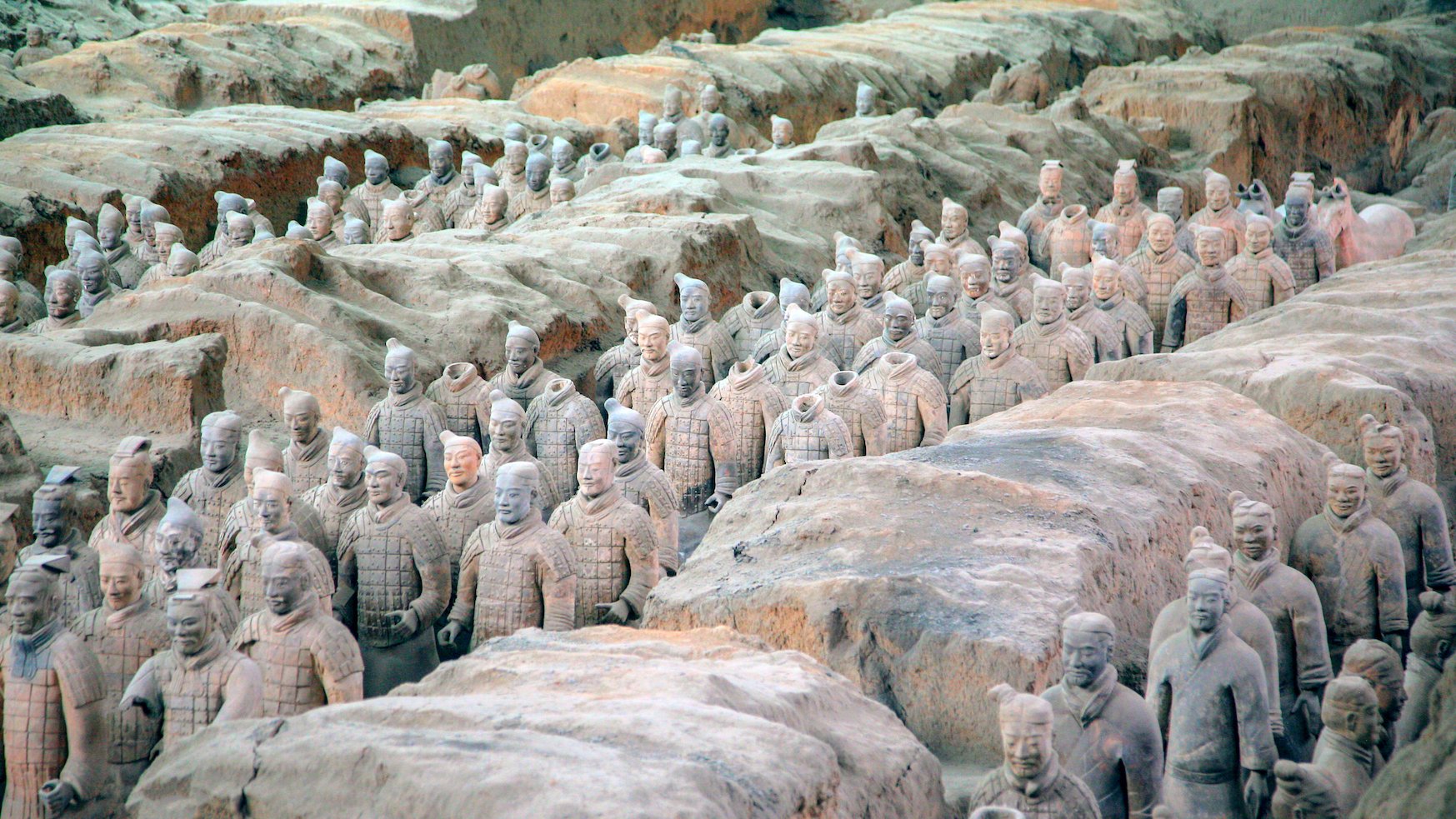The Illusion of the Terracotta Army, Tomb of the First Emperor of China
Warriors in pits (various), Qin dynasty, c. 210 BCE, painted terracotta, from the mausoleum of the First Emperor of China, Qin Shi Huangdi, Xi'an, China
(Photo: © Larry Ball)
Explore one of the most fascinating tomb sites in the history of Chinese archaeology, the tomb of the First Emperor of China, Qin Shi Huangdi.
This video is the second in a new series: conversations with kids, where an art historian partners with a kid to talk about a work of art. The idea is to empower kids to ask questions and talk openly about art, art history, and archaeology. The tomb of the First Emperor of China, who died in 210 BCE, was never excavated, but in the 1970s three pits were found nearby that contained a terracotta army! These pits contained over 8,000 life-size terracotta warriors lined up in trenches in military formation.
Warrior, Qin dynasty, c. 210 BCE, painted terracotta, from the mausoleum of the First Emperor of China, Qin Shi Huangdi, Xi'an, China
(Photo: © Larry Ball)
The terracotta warriors look like they are individualized, but is it an illusion?! Learn why the First Emperor needed a terracotta army near his tomb.
Discover how the terracotta soldiers were made and why they all look different in this art history conversation with a kid. Check out our video page!
Video embed about the terracotta army of the first emperor of China
Here is what the video covers:
0:00 Introduction
0:11 Tomb of the First Emperor of China
0:15 What do you see? Why are the terracotta warriors lined up?
0:44 What are the terracotta warriors made of? How big are they?
0:54 How did they make so many in such detail?
01:40 Why bury the terracotta army?
01:57 Why do the soldiers have different hand positions?
02:07 Terracotta horses and real chariots
02:29 When were the terracotta soldiers buried?
02:38 Three fun facts from a kid



